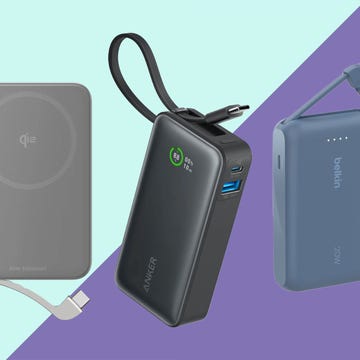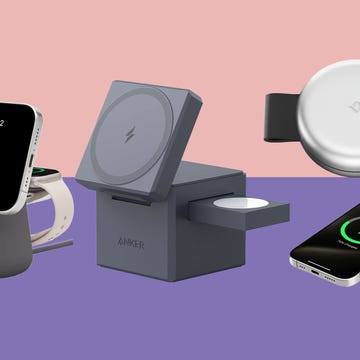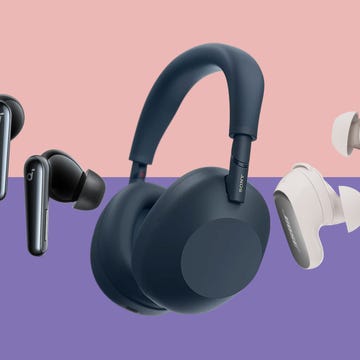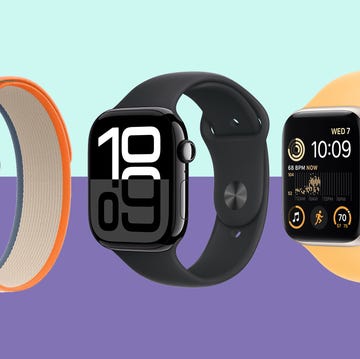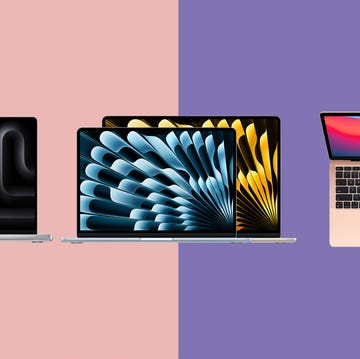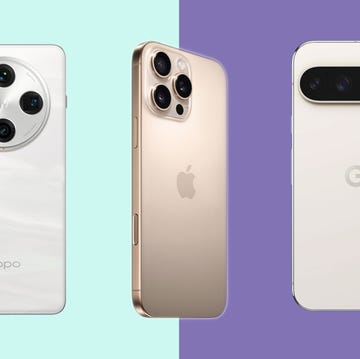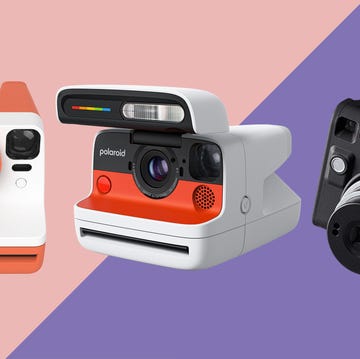You might have heard about support for Windows 10 ending in mid-October – but what does this actually mean? Well, essentially, if you’ve got an older computer, you could be about to find that it won’t get any more tech updates, technical support or security patches, and Microsoft 365, along with older versions of Microsoft Office applications, won’t get future updates.
Your computer will still technically work, but it will be less secure and won’t get new features. Because of this, we recommend most users (especially if you rely on the computer for your family, productivity, or as a small business) start to look at an upgrade. Depending on your needs, a switch to Windows 11 might work, and students after a cheap laptop will probably get on with a Chromebook, but we think it's time to consider switching to a Mac.
If you already own an iPhone, Apple’s computers have lots in common with its smartphones. And you don't have to worry about losing files, extra costs and complicated interfaces. Today’s Macs are more intuitive than ever – here are five reasons to make the switch.
What to read next
1. Familiarity and ease of use
If you’re someone who already uses an iPhone or iPad, a lot about macOS – Apple’s desktop operating system – is going to feel familiar.
Apple prioritises ease of use, and it’s simple to navigate settings and menus – many of them look the same as they do on your phone. It's also probably easier than you think to get started, especially if you’ve got an Apple device already.
The key differences are that a Mac’s menu bar is always at the top of the screen and changes based on the current app. On Windows, menus are usually inside each window, and there’s a taskbar at the bottom for quick access to files and settings (Macs have a “Dock”, just like an iPhone or iPad). MacOS settings are generally centralised in System Settings too, while Windows uses Settings or the older Control Panel.
We’re not going to pretend there isn’t a little bit of an adjustment period. You’ll have to relearn some things when it comes to moving files and locating certain settings. However, we think you’ll be surprised at how easy the transition feels.
2. Seamless iPhone compatibility
There isn’t only a familiarity benefit if you’ve already got an iPhone – you’ll also find that your Apple devices “talk” to each other with “Continuity” features. One of the most convenient is Handoff, where you can start a task in apps like Safari, Mail or Calendar on your phone, then switch to the Mac, and it will pick up where you left off.
We’re always using AirDrop for fast file sharing from an iPhone to a Mac, and you can also copy and paste across devices. It makes everything simpler, such as when you’ve got a webpage or address from a message on your phone, and you need to bring it across for some work on the computer.
You can also easily switch a FaceTime call to and from your Mac, and scan documents on your phone, then instantly paste them into an email. In short, if you’re keen to make things a lot more convenient, and you already have an iPhone, a Mac laptop or desktop computer is going to fit right in.
3. Macs are great for productivity and creativity
There are several easy-to-use productivity and creativity tools that come free with a Mac – like Pages, Numbers, Keynote, GarageBand and iMovie – and are convenient if you’re new to deciding what apps to use.
But what if you have to use Microsoft Office? Handily, Apple has collaborated with Microsoft on the Mac version of its Office software for several years and Word, Excel and PowerPoint are just as easy to use on Apple computers as they are on PCs, with feature parity in many areas.
Just like Windows computers, Macs also have several features to support multitasking – such as “snapping” windows to areas onscreen and creating “Spaces” for uncluttered work – while you can also use Focus modes to limit distractions and alerts.
You’ll probably have heard about Apple Intelligence, which is a suite of artificial intelligence (AI) features that are built into Mac computers. You can pick and choose how many of these features you want to use, and they’re made to help you in the places you’ll want to use them. Apple Intelligence offers writing help, summarisation of notifications and emails, emoji generation, proofreading and more.
If you’re cautious or uncertain about artificial intelligence, it’s worth saying that there are robust privacy protections in place, too. Most processing happens on your device, and if data is sent to the cloud, it’s not stored or associated with you. This is a greater degree of protection than rivals deliver. But while these tools can be handy, they’re not for everyone, and you don’t have to use them if you don’t want to.
4. It’s easier than ever to switch
Switching between platforms is always going to come with a certain amount of time investment and re-learning. But, there are a good number of built-in tools to help make the process easier. This is especially true if you’ve got an iPhone.
When you start up a new Mac, you now have an option to set it up via an iPhone or iPad, and it's a very seamless process that brings over your logged-in accounts and iCloud information like notes, passwords, calendar entries, photos, messages and reminders. This really speeds things up, and you can then finish off with any files you might need to move across, with the ability to easily link cloud services like Box, Dropbox, and Google Drive.
It’s worth preparing for a couple of hurdles, and having key files backed up and able to move across after the initial setup, but it shouldn’t be anywhere near as complex as it used to be.
5. Affordability, performance and longevity
It may seem odd to talk about affordability when Macs are, on average, about 30-50% more expensive upfront than Windows PCs. But that’s only half of the picture. You’re going to make savings in the long run due to the excellent longevity and reliability of Mac models, which should end up needing fewer repairs and are less likely to need replacing for several years. Just like a PC, you can also easily share a Mac with your family, thanks to its support for multiple users.
There are a few ways to get discounted Apple computers, too, such as student deals and trade-in, and we're fans of refurbished laptop offers, both from Apple itself and trusted resellers. We’ve got an article all about the best refurbished MacBook deals if you want to learn more.
To understand the full Apple laptop range, we also have a guide to the best MacBooks that should answer all your questions. The newest ones start at £999, but we’ve seen them drop to around £849 from retailers like Amazon, Very and Currys. We’ve reviewed both the MacBook Air M4 and MacBook Pro M4, and would recommend the lightweight Air for most people.
Keen on a desktop computer? These may suit a family much better than a laptop, and Apple has some great options. An iMac is an all-in-one computer that comes built into a display, with a keyboard and mouse in the box. It’s the best no-fuss option, it comes in fun colours, and the latest one starts from £1,199.
But, if you want the best value, look at the Mac mini. You’ll need to add a wireless mouse, wireless keyboard and monitor, but the computer itself starts at under £600 and is seriously powerful. It will do everything the pricier machines can, and you could upgrade its peripherals over time, if you wanted a better display in a few years, for example.
When you factor in discounts and that top-spec refurbished models can be under £500, Macs may feel more reasonable than you realised. We know PCs are still more affordable up front, but there are those longevity benefits to take into account.
Verdict: Should you make the switch to Mac?
Upgrading to Windows 11 and getting a computer that's compatible with the newer Microsoft operating system probably feels like the simplest and easiest switch and, for some, it might be.
However, some businesses have reported high costs and headaches with the transition, along with quirky bugs. It might not work for everyone, especially those who are already used to other Apple devices. A cheap Chromebook is another way to go, but only if you’re fine with a lightweight and web-centred way of working.
Macs offer a polished and easy-to-use interface with top build quality and excellent support. The upfront cost is going to be higher and there might be some niche apps that won’t work – serious gamers are likely to struggle with a switch to a Mac, for instance. But, for loads of people, the productivity, efficiency, speed and longevity of Apple’s computers make them easy to recommend.
You’ll want to weigh up your own needs, budget and existing devices, of course. But, if you’re already used to your iPhone and iPad, the switch won’t be tricky as you may think. And we’ve always been strong believers that your tech should make life easier, not harder.
Simon Cocks is Good Housekeeping UK’s Technology Editor, overseeing tech shopping content and strategy for the title. He previously also worked across other titles including Esquire UK, Digital Spy, Men’s Health UK and Women’s Health UK.
Simon specialises in testing the latest smart gadgets, home entertainment gear, headphones, speakers, portable chargers, radios, e-book readers and smartphones. He's reviewed top tech products from brands including Google, Apple, Amazon, JBL and Bose.
A magazine journalism graduate from Kingston University in 2014, Simon also worked on the Discovery and Silkroad inflight magazines. He then gained experience writing about entertainment at SFX and Total Film. He also contributed reviews and interviews to TwitchFilm (later ScreenAnarchy), CultBox and Frame Rated.
He joined Good Housekeeping UK as the Editorial Assistant for Special Projects and was part of Good Housekeeping’s Consumer Affairs Team between 2014 and 2019. In this role, he conducted price comparison research, wrote detailed household and money-saving advice guides and edited thousands of in-depth reviews for the Good Housekeeping Institute.
He has focused on technology and gadgets since 2020, where he started by testing out power banks and instant cameras. He writes reviews, roundups, news articles and deals updates, and also covers top tech deals during sales like Amazon Prime Day, Black Friday and Cyber Monday.
When not testing out the latest gizmos, you’ll find Simon either catching up with the newest releases at his local cinema or out shooting with his beloved compact camera.
You can follow Simon on Instagram, on Bluesky, on LinkedIn and on Threads.











